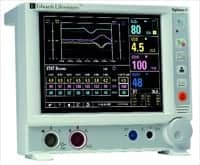In a world where technological advancement is rapid and constant, obsolescence comes quickly. And medical manufacturers must constantly weigh the costs and benefits of one important question: When is the best time to redesign and update an older device that’s been on the market for a while?
“If you have a medical device that’s performing well, the temptation can be to sit tight—as the old adage goes, ‘If it ain’t broke, don’t fix it,’” says Abi Millar, medical device writer for GlobalData. “However, no device can dominate the market forever, and many older devices may need an update to stay competitive.”
Sometimes the decision to redesign is straightforward. “If the medical device is quite simple, this ‘end’ may come in the form of patent expiry, which opens the floodgates to a slew of competitors,” says Millar. “That’s great news if you’re a rival manufacturer but can pose challenges if the product is yours.”
That said, Millar adds, “medical devices tend to be protected by multiple patents, rather than just one. And while a pharmaceutical product coming off patent is immediately at risk from generics, that isn’t the case in med tech. Right from the outset, a rival manufacturer would usually be able to build a similar product without infringing your intellectual property.”
But patent infringement isn’t the most important problem, Millar says: “The real issue for aging medical devices isn’t so much a patent cliff as component obsolescence and availability, in which one or more of the essential parts become impossible to source.”
This kind of obsolescence can strike at any point in the product life cycle, says Tom Ackrill, business development manager at medical contract manufacturer ITL Group. “Usually it’s more common in older legacy devices that have been kept on the market long past their intended design life,” he says. “As technology moves on, manufacturers of those individual components change their range and develop something newer, faster, smaller, better. The legacy components start to fall by the wayside.”
Of course, simply finding something else that can do the job and substituting it in isn’t always an easy option. “The medical device regulatory landscape of the 21st century is extremely risk-centric, and changing even the simplest of components within a device has to be done and documented in a way that demonstrates to the world that your product is still safe,” says Ackrill.
“Component obsolescence is seen as a bit of a bogeyman in the industry because of the knock-on effects of a simple component change when it comes to maintaining compliance,” he adds. “Luckily there are companies out there that are often asked to come to the rescue of a product heading toward the medical device graveyard.”





